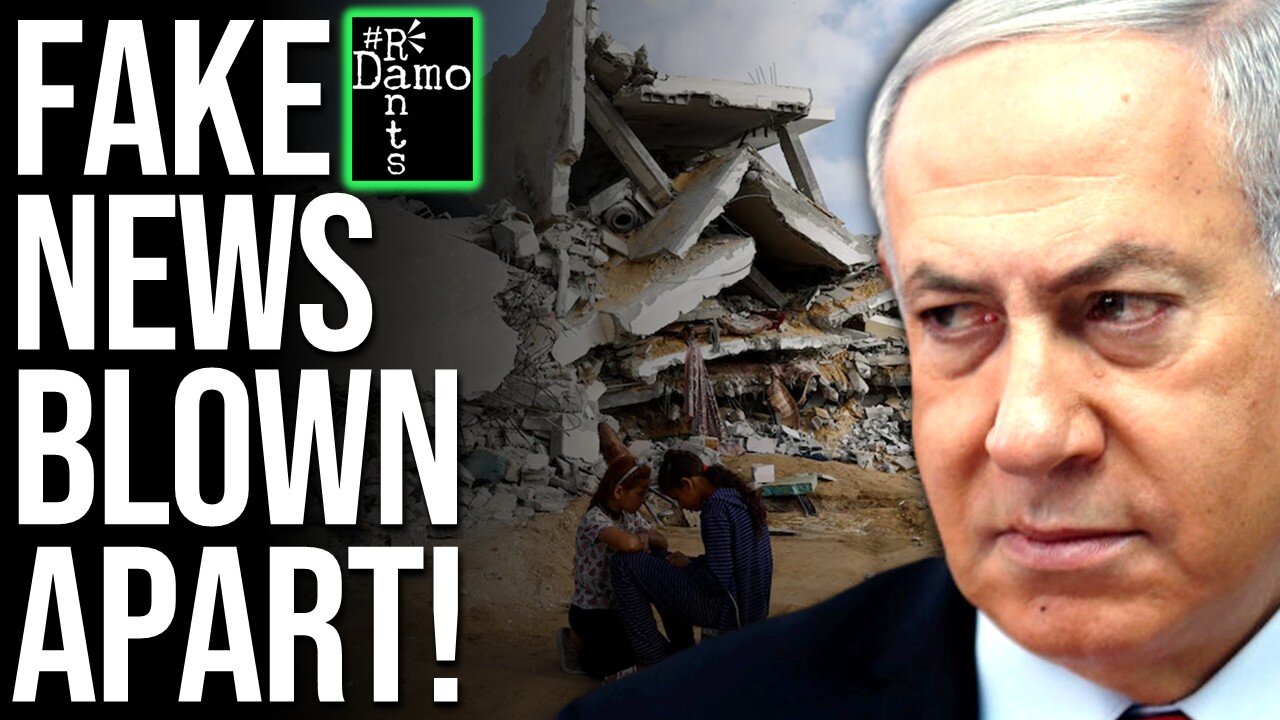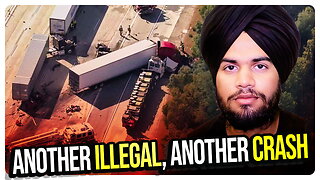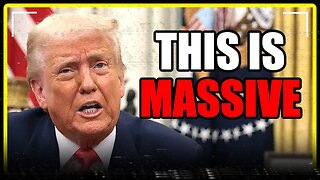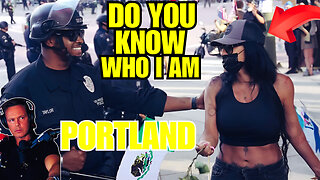Premium Only Content

The Rafah Lie: How Israel Fabricated a Hamas Attack to Collapse the Ceasefire
Right, so here we are again — Israel drops the bombs, then drops the lie to justify it and Benjamin Netanyahu couldn’t leap at the chance fast enough. This time it was Rafah: two Israeli soldiers killed as it happens by their own bulldozer, hitting some of their own unexploded ordnance, but no, it was Hamas it was proclaimed, they’re in the tunnels! It never ceases to amaze me how they can obliterate all of these building above grounds, yet these tunnels are ever present, never seeming to collapse! What did collapse for several hours at least, was the ceasefire itself of course, the truth buried under the same rubble that buried Israel’s victims. Netanyahu didn’t just jump the gun; he built an entire justification to end the ceasefire, paint Hamas as breaching the terms of it, even though Israel had done that 47 times up until that point and actually, it all turned out to be a friendly fire incident. So once again we can say it wasn’t Hamas that broke the ceasefire — it was a government so depraved and desperate to resume their genocide that it mistook its own accident for a gift from God.
Right, so the ceasefire announced in Sharm el-Sheikh on 9 October 2025 was meant to end one of the most destructive phases of the Gaza war. Mediated by Egypt, Qatar, Turkey, and the United States, it promised a halt to hostilities, phased prisoner exchanges, and a monitored flow of humanitarian aid. For ten days, the ceasefire has held, mainly because Israel can get away with repeatedly breaching it as they’ve done from day one. Then, in Rafah, an explosion killed two Israeli soldiers. Within hours, the truce was apparently gone. The official story claimed Hamas had broken it, so the media dutifully carried the joyous news that Israel was justified in resuming the very atrocities it hadn’t actually stopped committing. Yet the evidence now shows that Israel was at fault, but that didn’t stop them building more warfare based on a lie.
From the first minutes, the state’s narrative moved faster than the facts. Israeli military spokespeople told domestic media that “terror operatives” had fired on soldiers near Rafah. Benjamin Netanyahu convened his security cabinet and authorised what his office called “forceful strikes.” Air-raid sirens sounded across Gaza before any investigation could occur. Hospitals recorded dozens of civilian deaths within a single day.
Hamas issued an immediate denial. Its political bureau confirmed that Rafah remained an Israeli-controlled “red zone” with no active Palestinian units. The denial was ignored. The bombing continued.
Within hours though, US officials privately concluded that Israel’s version of events was false. The Rafah blast had not been caused by Hamas or any Palestinian faction. A military bulldozer had hit unexploded ordnance — Israel’s own munitions — during clearance work. Two soldiers died on the spot. Despite knowing this, Netanyahu’s government maintained the story of a Hamas attack and used it to relaunch the genocide.
That single act — a lie told to cover an accident — detonated far beyond Rafah. It collapsed an internationally guaranteed ceasefire, froze humanitarian aid, and killed almost a hundred civilians in the first week alone. The Rafah Lie became both the justification and the method of renewed aggression.
The explosion occurred inside Israeli-controlled territory. The accusation against Hamas was made immediately, without evidence. The bombing campaign began within hours. Israel never presented missile fragments, launch coordinates, or radar data proving a Hamas strike. Then, as Washington confirmed the internal cause, the claim quietly disappeared from Israeli briefings and Netanyahu must have grudgingly I daresay called things off.
This was not confusion but calculation — the decision to weaponise an internal mistake to destroy an inconvenient truce.
Netanyahu’s political circumstances made that calculation inevitable. His coalition is fracturing under the weight of far-right partners. Bezalel Smotrich and Itamar Ben-Gvir had already condemned the ceasefire as weakness. Smotrich posted one word on social media: War. War Hawk Avigdor Liberman called for “a true Iron Wall policy.” The political message was unmistakable therefore: a leader who maintained the ceasefire would be a leader who would have to fall.
Netanyahu also faced the resumption of his corruption trial. Court hearings scheduled for that week were suspended once airstrikes began though, a cold keeping him from them before that. War, again, provided political sanctuary, so Rafah gave him both a diversion and an opportunity to resume aggression.
Since yesterday, Israeli aircraft have carried out more than a hundred strikes. Gaza’s Government Media Office documented eighty separate ceasefire violations in the following days, leaving ninety-seven dead and two hundred-thirty wounded. None of this has been contested by Israel.
Every region of the Strip was hit. In al-Bureij and al-Maghazi, residential blocks were flattened. In al-Mawasi, an area Israel had designated a “safe zone,” an airstrike killed a woman and injured several children. Hours later, another bomb on the same site killed four more, including two children. In al-Zawaida, a missile destroyed a building housing journalists; two were killed, among them a radio correspondent.
Hospitals recorded the incoming wounded under candlelight. The aid blockade, reinstated that same morning, meant no medical supplies or fuel crossed the border. Hamas’s truce-monitoring committee reported that fuel deliveries had fallen to 7 percent of agreed levels. Zikim crossing, the key food route, was sealed entirely once more.
Israel justified all of it as retaliation for Hamas fire — the fire it knew had never happened. The words changed, but the logic held: if there are explosions, Hamas must be to blame, and therefore any response is legitimate.
Smotrich and Ben-Gvir, who had spent weeks threatening rebellion, publicly backed the renewed assault and dropped their criticism of Netanyahu’s leadership. The political crisis ended the moment the bombing resumed; what had looked like division was replaced by a single chant for war. This alignment of domestic necessity and military aggression is not new. Each major Israeli escalation has followed periods of political vulnerability: 2012’s “Pillar of Defence,” 2014’s “Protective Edge,” 2019’s “Guardian of the Walls.” When public legitimacy erodes, bombardment restores it. Rafah fits the same rhythm, with the added cynicism that the spark came from Israel’s own ordnance.
By acting on a lie it knew to be false, the government destroyed what little credibility remained in its ceasefire commitments. The deception turned the truce into a trap — first for Gaza, then for what is left of Israel’s own reputation. Reversal achieved: the state that accused Hamas of betrayal ended up exposing its own. The lie was supposed to save Netanyahu; instead it marked the moment his narrative blew up in his face.
Washington’s reaction confirmed complicity. US officials confronted Israel privately after verifying that the Rafah blast was self-inflicted. Publicly, they said nothing. Donald Trump’s comment — “Hamas has been doing some shooting … we think maybe the leadership isn’t involved” — was a masterclass in ambiguity. It preserved Israel’s cover story while allowing the bombing to continue.
For the mediators — Egypt, Qatar, and Turkey — the silence was humiliating. Each had guaranteed the truce. Each watched it collapse without consequence. Egypt’s government avoided confrontation. Qatar expressed “concern.” None invoked breach clauses or demanded investigation.
Under international humanitarian law, ceasefires are binding. Attacking civilians or obstructing humanitarian aid during one constitutes a grave breach of the Geneva Conventions. Israel’s re-imposed blockade and airstrikes on civilian infrastructure therefore violate both the ceasefire and international law.
The deliberate use of a false justification adds another layer: perfidy — the act of feigning adherence to a truce to gain military advantage. If a state discovers that its own ordnance caused a blast but uses that incident to resume hostilities, it commits precisely that offence.
Historically, the Rafah episode fits a familiar pattern. In 2008, an Israeli raid that killed six Hamas members ended an existing truce and led to Operation Cast Lead. In 2014, the kidnapping of three Israeli teenagers—initially blamed on Hamas leadership but later found to be the act of an unauthorised cell—was the declared trigger for Operation Protective Edge. In 2023, the al-Ahli Hospital bombing, first attributed to Islamic Jihad before evidence contradicted that claim, reinforced the same method of accusation followed by quiet retraction. Rafah 2025 repeats it once more: an incident, a claim, escalation, and eventual exposure. Each time, the world moves on before accountability can begin. Each time, the cost is paid by civilians. Each time, the lie becomes policy.
Statistics cannot convey the disorientation of those who believed the ceasefire meant safety. Families in Gaza had begun returning to their homes, sweeping dust from concrete floors, reopening market stalls, and rebuilding walls without roofs. Schools reopened in tents. For ten days, they believed the worst had passed.
Rafah matters far beyond Gaza. It demonstrates that a ceasefire mediated by the United States can be destroyed by fabrication without penalty.
States that watched Rafah unfold will remember that an international guarantee meant nothing once Israel chose to violate it – violate it yet again at that.
Rafah eroded not only trust in Israel’s commitments but in the entire architecture of Western-sponsored diplomacy. If this truce could be killed by a lie, any truce can be.
Mainstream coverage followed the familiar path of repetition first, correction never. Global networks led with the headline “Ceasefire in doubt after Hamas attack.” When Hamas denied involvement, those headlines remained unchanged. By the time alternative outlets published the bulldozer revelation, the narrative had already hardened.
The suppression of contradiction was near-total. Major US and European outlets did not reference the Drop Site report by Ryan Grim or the White House’s own findings. Instead, they shifted language to “renewed hostilities” and “fragile calm shattered,” phrases that obscure where responsibility lies.
What Rafah confirms is a system, not an error. The transformation of accidents into pretexts is now an established mechanism of Israeli strategy. When deterrence wanes or political pressure rises, a managed escalation restores control. The steps rarely change: incident, accusation, bombardment, erasure.
In 2025, the sequence was caught in real time, yet the result was the same. The ease with which the deception succeeded shows how completely accountability has been hollowed out.
Inference: the Rafah deception is not an aberration; it is the purest expression of a doctrine that sees truth as expendable once strategic needs demand violence.
For Netanyahu, the lie worked only in the short term. Domestically, it united his coalition and postponed his trial. Internationally, it exposed his government’s dependence on deception. Leaks from US officials confirmed what Israel hoped to bury. The very justification he had chosen became evidence of bad faith.
This is the reversal at the heart of the story: the attempt to manufacture legitimacy ended up destroying it. Israel’s narrative of victimhood imploded under its own evidence. The lie that was supposed to defend its image now defines it.
What does Rafah leave behind? A humanitarian catastrophe, a discredited ceasefire process, and a moral precedent that truth is optional for those with sufficient power.
It tells every future belligerent that facts are irrelevant once alliances align. It tells every civilian under bombardment that law is symbolic. And it tells every journalist that evidence without amplification changes nothing.
The question left hanging is how long the worlds leaders intends to keep on pretending not to know. We all do.
The Rafah explosion began as an accident, before rapidly becoming an excuse. Israel’s leadership took a mistake of its own making, blamed its enemy for it out of convenience and opportunism, and bombed a captive population to prove their lies true. The United States learned the truth, then suppressed it, and shielded the perpetrator. The mediators stayed silent. The mainstream media looked away.
That sequence — from deception to destruction — is now the blueprint for how power operates in an era without accountability. The facts are simple: a bulldozer hit unexploded ordnance; two soldiers died; Hamas did nothing; Israel blamed Hamas; and then they bombed anyway.
The ceasefire did not collapse here naturally; it was deliberately killed off the moment the opportunity arose.
Every civilian killed after 19 October is traceable to that moment. Every aid truck stopped at the border, every hospital left dark, every promise of peace broken, stems from a single decision to convert an error into an opportunity to renew atrocities and save Netanyahu’s political skin. The ceasefire is back in place because this time the US didn’t play ball, but only so far as Israel pay any attention to it anyway and only until the next opportunity arises for Netanyahu to try and bring it down again.
This all came of course hot on the heel of news that other incidents being blamed on Hamas and stories of Hamas operatives fighting again and violating the ceasefire, when in actual fact, it’s Israeli funded and armed militias within Gaza that are responsible. Get all the details of that story in this video recommendation here as your suggested next watch.
Please do also hit like, share and subscribe if you haven’t done so already so as to ensure you don’t miss out on all new daily content as well as spreading the word and helping to support the channel at the same time which is very much appreciated, holding power to account for ordinary working class people and I will hopefully catch you on the next vid. Cheers folks.
-
 DVR
DVR
Kim Iversen
3 hours agoTrump Threatens To End ALL Support For Israel
35.9K51 -
 15:38
15:38
Cash Jordan
3 hours agoPortland Zombies EMPTY 52 Stores… Mayor FREAKS as “Sanctuary” SELF DESTRUCTS
11.5K19 -
 1:56:46
1:56:46
Redacted News
3 hours agoHIGH ALERT! Trump pushes "land war" in Venezuela, and Russia goes nuclear | Redacted News Live
114K65 -
 16:47
16:47
Robbi On The Record
2 hours ago $0.92 earnedThe Day Seeing Stopped Meaning Believing | Sora, AI and the Uncanny Valley
5.78K3 -
 9:54
9:54
Dr. Nick Zyrowski
1 day agoDoctors Got It Wrong! What High Cholesterol REALLY Means...
8.02K3 -
 LIVE
LIVE
Tundra Tactical
2 hours agoProfessional Gun Nerd Plays Battlefield 6
104 watching -
 1:06:06
1:06:06
vivafrei
4 hours agoAnother Illegal Alien Kills Americans! Candace Owens Promises to Violate Kirk Gag Order? & MORE!
120K31 -
 1:42:30
1:42:30
The Quartering
5 hours agoTrump Blamed For NBA Rigging Scandal, Major X Change Renders Site Useless, Church Nonsense
142K46 -
 4:18:11
4:18:11
MattMorseTV
6 hours ago $51.62 earned🔴Trump makes URGENT ANNOUNCEMENT.🔴
88.4K87 -
 12:05
12:05
Clintonjaws
10 hours ago $10.23 earnedPortland ICE Rioters Getting Arrested - This Is Priceless!
53K25